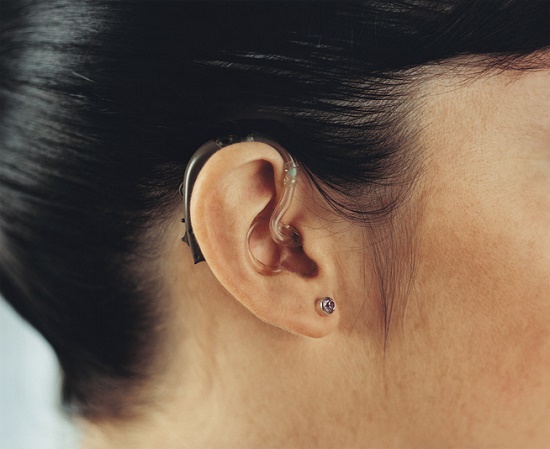
Have you ever had problems hearing in a crowded room or restaurant but can hear without any problem at home? Do you have particular trouble hearing higher-pitched voices or TV dialogue?
If so, you may have hearing loss, and hearing aids might be able to help.
But how do hearing aids work exactly? Are they basic amplifiers, or something more elaborate?
This week we’ll be looking at how hearing aids work and how they are a great deal more advanced than many people realize. But first, let’s begin with how normal hearing works.
How Normal Hearing Works
The hearing process starts out with sound. Sound is simply a kind of energy that travels in waves, like ripples in a pond. Things make sound in the environment when they generate vibrations in the air, and those vibrations are ultimately captured and transferred to the ear canal by the outer ear.
Immediately after moving through the ear canal, the sound vibrations strike the eardrum. The eardrum then vibrates, creating and amplifying the original signal which is then transferred by the middle ear bones to the snail-shaped organ of the middle ear known as the cochlea.
The cochlea is full of fluid and tiny nerve cells known as cilia. The vibrations transferred from the middle ear bones agitate the fluid and stimulate the cilia. The cilia then transmit electrical signals to the brain and the brain interprets the signals as sound.
With the majority of instances of noise-induced hearing loss, there is injury to the cilia. Consequently, the arriving signal to the brain is compromised and sounds seem quieter or muffled. But not all sound frequencies are equally impaired. Commonly, the higher-pitched sounds, including speech, are affected to a greater extent.
In a raucous setting, like a restaurant, your ability to hear speech is diminished because your brain is obtaining a diminished signal for high-frequency sounds. On top of that, background noise, which is low-frequency, is getting through normally, drowning out the speech.
How Hearing Aids Can Help
You can understand that the solution is not merely amplifying all sound. If you were to do that, you’d just continue to drown out speech as the background noise becomes louder relative to the speech sounds.
The solution is selective amplification of only the sound frequencies you have a hard time hearing. And that is only feasible by having your hearing professionally examined and your hearing aids professionally programmed to magnify these particular frequencies.
How Hearing Aids Precisely Amplify Sound
Today’s hearing aids consist of five internal parts: the microphone, amplifier, speaker, battery, and computer chip. But hearing aids are not just ordinary amplifiers—they’re intricate electronic devices that change the properties of sound.
This happens by way of the computer chip. Everyone’s hearing is one-of-a-kind, like a fingerprint, and therefore the frequencies you need amplified will vary. The astounding part is, those frequencies can be ascertained precisely with a professional hearing test, technically known as an audiogram.
Once your hearing professional has these figures, your hearing aid can be custom-programmed to enhance the frequencies you have the most trouble with, enhancing speech recognition in the process.
Here’s how it works: the hearing aid receives sound in the environment with the microphone and transfers the sound to the computer chip. The computer chip then translates the sound into digital information so that it can distinguish between assorted frequencies.
Then, determined by the programmed settings, the high-frequency sounds are amplified, the low-frequency background sounds are repressed, and the improved sound is served to your ear via the speaker.
So will your hearing return completely to normal?
While your hearing will not totally return to normal, that shouldn’t prevent you from accomplishing substantial gains in your hearing. For nearly all people, the amplification delivered is all they need to comprehend speech and participate in productive and effortless communication.
Think about it in this way. If your eye doctor told you that they could enhance your vision from 20/80 to 20/25, would you forfeit prescription glasses because you couldn’t get to 20/20? Absolutely not; you’d be able to function perfectly with 20/25 vision and the improvement from 20/80 would be enormous.
Are you set to discover the improvements you can attain with contemporary hearing aids? Give us a call today!
